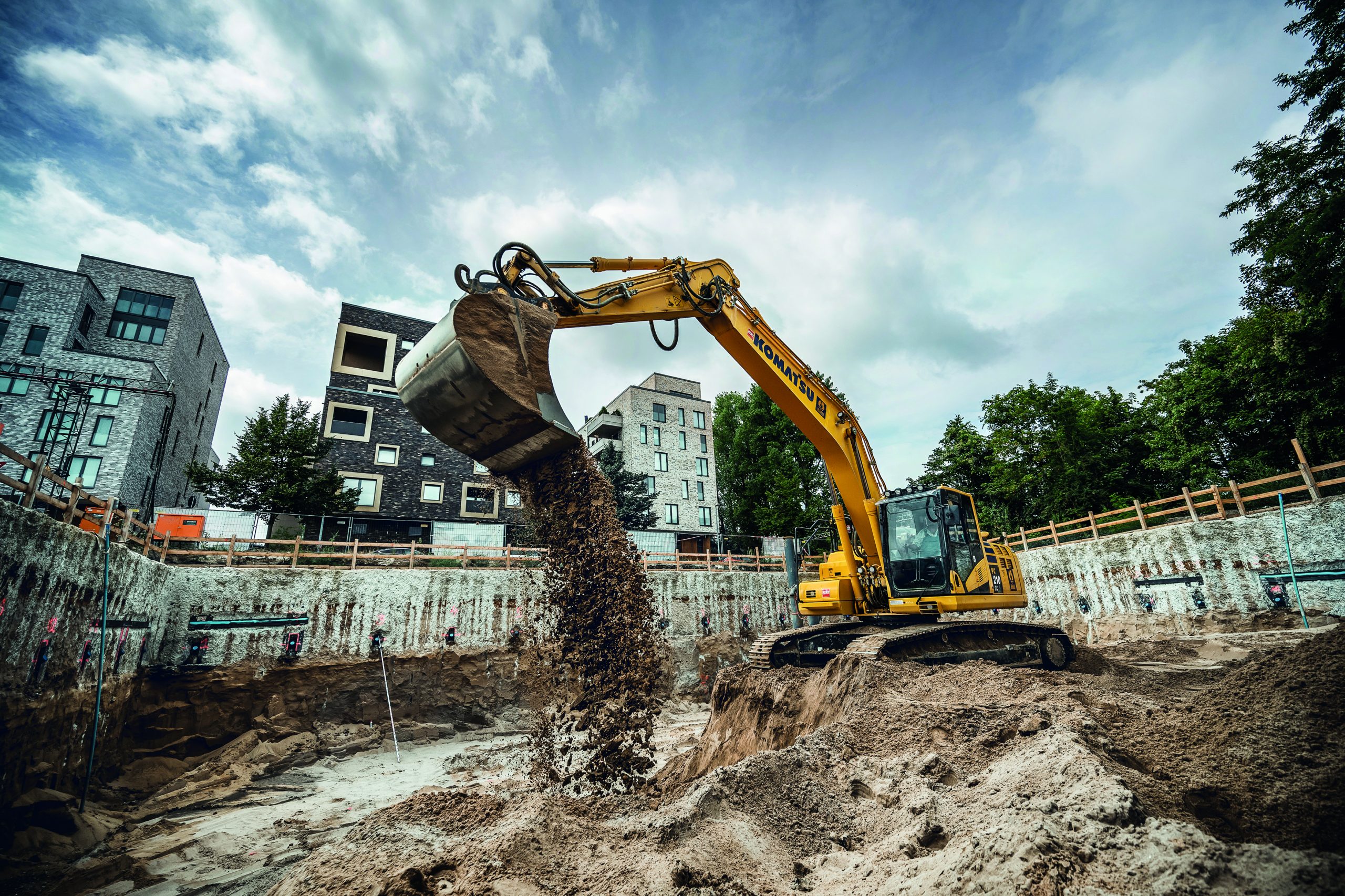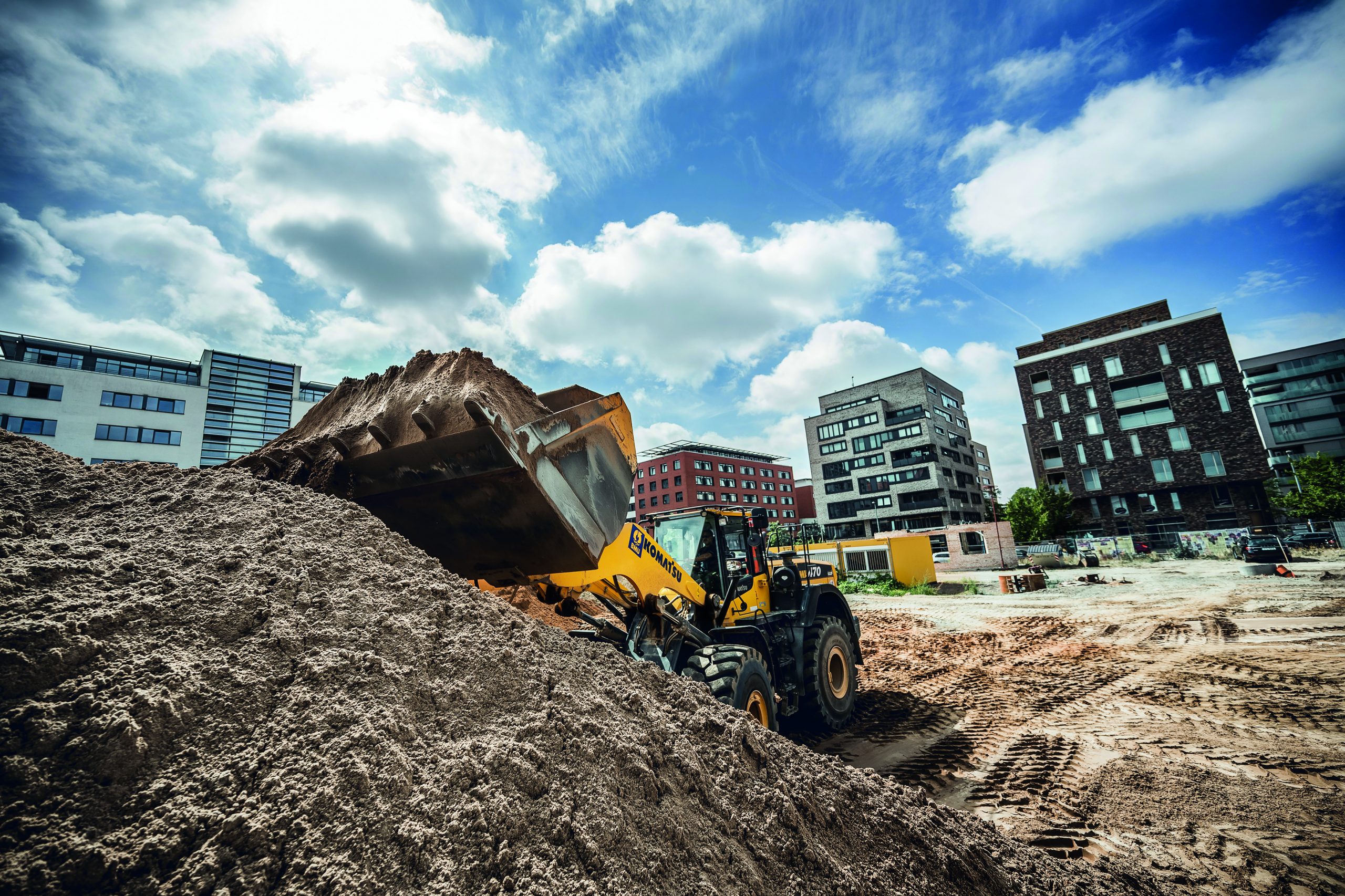
Hannover, Germany – Fountain pens, watercolor paint boxes and chemical ink erasers: For more than 80 years, the paint and ink manufacturer Pelikan created legendary products in Hannover’s List district. Because the plant had gradually become too small for production, it was finally closed down in 1989. Since then, the site has been transformed bit by bit into an attractive office and residential quarter. Currently, a new residential quarter called “ZWEI” is being constructed in the north of the Pelikan district on two construction sites with a total area of 10,300 m². A joint venture between BAUER Resources GmbH and BAUER Spezialtiefbau GmbH constructed the complete excavation pit for this project.
But before things could really get started, in preparation for the excavation, the entire site first had to be set up: space had to be arranged for interim storage of the soil, and site clearance of the construction area had to be carried out. Then two machine operators from the Bauer Umwelt Division of BAUER Resources GmbH proceeded with the preliminary excavation of more than 13,000 t of polluted soil until the excavation supervision team came across the tail of a bomb.

The result: The site was stopped to exclude other points of suspicion and to prevent multiple evacuations of thousands of residents and emptying hundreds of apartments. “We were aware that the site is located in one of the city’s former bomb drop zones and that ordnance can still be found due to various areas that cannot be probed. For this reason, the earthworks were supervised around the clock. Additional work areas outside the excavation area were precisely investigated and cleared, in some places involving a great deal of effort for the employees of BAUER Spezialtiefbau GmbH,” explains Site Manager Friedrich Leifheit from the Bauer Umwelt Division of BAUER Resources GmbH and adds: “Fortunately, thefindings did turn out to be harmless – an evacuation was not necessary.”

After the shutdown, the rest of the excavated material was handled. Once this was completed, the specialist foundation engineering experts constructed the retaining wall using heavy equipment. In the process, a total of 4,000 m² of mixed-in-place wall (MIP) were installed up to a depth of 21 m. Alternating in rapid turns, the three machine operators continued their work on the excavation pit down to the first anchor layer. After reaching this layer, the team of BAUER Spezialtiefbau GmbH anchored the MIP wall using around 90 anchors with drilling lengths of up to 20 m. Then the construction of the excavation pit went even deeper – down to a final depth of 8 m. During the entire work, approximately 25,000 t of material was excavated and disposed of, including roughly 11,000 t of production and demolition residues.
The conclusion from Friedrich Leifheit and his colleagues: “We can be satisfied. The project went well – even if it was not simple due to the depth of the excavation pit and all the suspected ordnance locations.” After the completion of the quarter, the site will be known not just due to its colorful previous history, but also as an attractive residential neighborhood.










































